The Kineograph (later called flip book) was patented in 1868 by John Barnes Linnett. Graphic Arts holds eleven modern and historical examples. For over 5,000 examples see http://www.flipbook.info/index_en.php
Fatima moving picture dance book: the Maxixe ([S.l.]: Liggett & Myers Tobacco Company, [1914]); 50 x 65 mm. Graphic Arts Collection (GAX) 2007-0082S
The Liggett & Myers Tobacco Company (better known as L&M) produced a brand of Turkish cigarettes under the name Fatima. L&M marketed Fatimas through magazines, radio, television, and much more. In 1914, L&M released ten flipbooks under the theme of modern dance. “These moving picture booklets on the Dances of to-day … make it possible for all to know what the latest accepted dances are and how to dance them.” The flipbook shown here offers a Russian dance called the Maxixe, with images and step-by-step instructions.
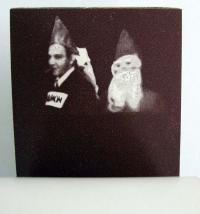
Season’s greetings from Solomon & Gelman ([S.l. : s.n., 19—]). 51 x 82 mm. Graphic Arts Collection (GAX) 2007-0081S
The cartooning team of Woody Gelman (1915-1978) and Ben Solomon (active 1930s-1950s), working for Max Fleischer Studios, created the first animated versions of Popeye (1930s) and Superman (1940s), and the original Bazooka Joe for Bazooka bubble gum (1953). In addition, they published a series of juvenile novelettes called Triple Nickel books because they sold for three nickels (15 cents).
One year, as a Christmastime treat, the team created this flip book showing two men wearing Santa Claus masks on the back of their heads. As the pages flip, the heads slowly turn and we see their real faces along with their names.
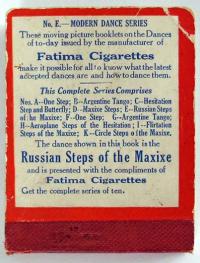
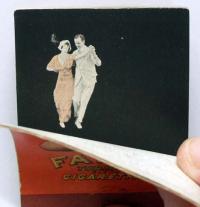
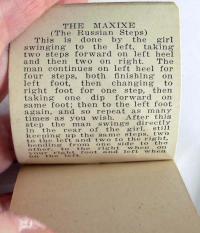

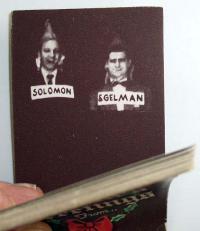
Delightful! And a fantastic website, too. Thank you for sharing this.
Maxixe is also know as a Brazilian dance and music : Wikipedia confirm this :
Maxixe (dance)
From Wikipedia, the free encyclopedia
The maxixe (Portuguese pronunciation: [maˈʃiʃi]), occasionally known as the Brazilian tango, is a dance, with its accompanying music, that originated in the Brazilian city of Rio de Janeiro in 1868, at about the same time as the tango was developing in neighbouring Argentina and Uruguay. It is an Afro-Brazilian dance developed by black slaves of Chopi blood from Maxixe, Mozambique.
Like the tango, the maxixe travelled to Europe and the United States in the early years of the twentieth century.
The music was influenced by various other forms including the tango, lundu, polka and habanera, and is danced to a rapid 2/4 time. Pianist Ernesto Nazareth composed many Brazilian tangos; he was known for blending folk influences into his tangos, polkas and waltzes. He resisted using folk terms for his compositions; he preferred Brazilian Tango to maxixe.[1]
The maxixe was one of the dances that contributed to the samba and lambada.
Vernon Castle said of the maxixe in his 1914 book Modern Dancing, "The steps themselves are not difficult; on the contrary, they are childishly simple; it is the easiest dance of all to do, and I think the hardest of all to do well."[2]
Troy Kinney (1914) wrote the following about the Maxixe:[3]
This is, virtually, a revival of the Two-step, plus certain Tango steps and enchainements (step sequences). Instead of the Tango's touch-and-turn-in of the foot, it employs a device of resting the heel on the floor, the foot pointed upward, while the body assumes a bent-over posture not particularly attractive.